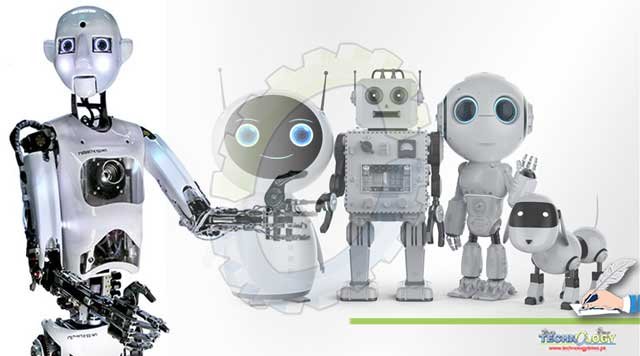Robots are designed to substitute humans in the accomplishment of various tasks. Robotics field deals with the development of programmable machines, meant to aid humans to perform their day-to-day tasks.

The field of research robotics provides a clear understanding as to what a robot is, how it operates, and the various types of robots you can encounter in your everyday life.
This article gives an outline of the five major categories of robots that help make life easier. They include the following.
1.Pre-programmed Robots
Pre-programmed robots are those robots, which operate based on the programs that have already been instituted in them. These robots are communicated to in time on what they are expected to perform. Hence, they simply accomplish that program.
Pre-programmed robots cannot alter their way of operation in the process of working. Moreover, they operate under no human guidance. Hence, provided you have already inputted a program on what you want them to perform in a pre-programmed robot, then you can sit back and allow them to accomplish the pre-programmed task.
A great example of a pre-programmed robot is the mechanical arm located on a motorized assembly line. The mechanical arm in the motorized assembly, better known as the assembly line, performs a single task.
The single task could be that of door welding, or that of inserting a particular part into the engine, and others. The pre-programmed robot is designed to accomplish the task quicker, more proficiently, and longer than humans.
2.Humanoid Robots
These robots simulate human behavior. They can accomplish human-related tasks such as jumping, running, plus carrying objects. Humanoid robots are made to mimic humans, to the extent of having faces like those of humans plus facial expressions.
Moreover, humanoid robots have bodies built to look like humans for functional roles like mingling with human tools and surroundings, for investigational purposes like research on bipedal movement, besides other roles. Humanoid robots are utilized in the accomplishment of painstaking and hazardous tasks.
The humanoid robots are employed in the inspection, repairs, plus disaster responses at power generating plants. These tasks are tiring and dangerous. Hence, they are best placed to act on behalf of humans.
3.Autonomous Robots
These robots perform tasks without relying on human operators. Autonomous robots are made in such a way that they can accomplish tasks in open environs without the presence of supervision from any human operator.
Autonomous sensors are unique. They have sensors, which they employ to ‘see’ their surroundings. They then utilize a computer, a decision-making point, which is installed in them, to make an important move. The move they make is highly dependent on their data plus mission.
Examples of autonomous robots comprise cleaning bots, hospitality bots, medical assistant robots, autonomous drones, and lawn trimming robots. One famous cleaning bot is the Roomba vacuum cleaner, which utilizes sensors to move freely all over a home.
4.Teleoperated Robots
These types of robots are semi-autonomous. They employ wireless networks to facilitate human control from an innocuous distance. Teleoperated robots often operate in dangerous geographical circumstances, weather or conditions.
An example of a teleoperated robot is the drone employed in detecting any landmines that may have been planted on a battleground. Also, there are human-controlled submarines, which are utilized in fixing below water pipes leakages during the Bp oil leak.
5.Augmenting Robots
As the name suggests, augmenting robots are designed to either improve present human abilities or replace human proficiencies that they may have lost. These robots are considered the most helpful to humans.
Augmenting robots very common in the field of medicine since they are highly needed by disabled individuals. They play a crucial role in the lives of those with disabilities since they replace that which they have lost. That explains why you will hear the phrase that life is limitless as the disabilities are no longer a stumbling block to what humans are capable of performing, thanks to augmenting robots.
Conclusion
The five types of robots explained above provide value via the automation of tasks in ways that result in cost savings, increased productivity, and enhanced employee safety. All the types impact us, humans, in all areas of our lives. Hence, there is need to embrace them and learn to live with them to facilitate a good future.